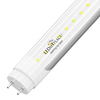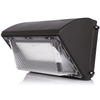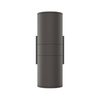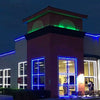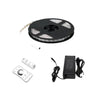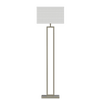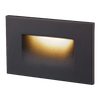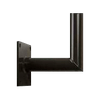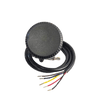For decades, ceiling fans have been a staple for homes and work locations to circulate air cost-efficiently and energy-efficiently. However, with this new technology called smart home, the old-fashioned ceiling fan is now being challenged by a new, sleeker version: the smart ceiling fan. But really, what is the difference between the two? In this blog, we'll compare in detail a Smart Ceiling Fan and normal fans so that you might decide which of them would best suit your requirements.
- Control and Convenience
Regular Ceiling Fan: Traditional ceiling fans are usually operated by pull chains, wall switches, or remote controls. Simple and efficient, they require manual intervention to change speed, direction, or turn them on and off.
Smart Fan: This often accompanies wireless control either through app or voice command and is also compatible with smart home systems like Alexa, Google Home, or Apple HomeKit. To put it in simple words, you're even able to control your fan without rising up from the couch or even when going to work with your smartphone and assistant by voice. Some smart fans can even be programmed to turn on or off according to your schedule or room temperature.

- Energy Efficiency
Standard Ceiling Fan: Most standard ceiling fans give only basic information regarding the energy-saving features, such as the reversing of the blade direction during winters to circulate warm air. However, the energy efficiency is mainly confined to motor design and fan speed control.
Smart Ceiling Fan: With improved designs in energy efficiency, most modern smart fans are associated with sensors that indicate the need to change the speed or when it should be set to turn itself off if the room reaches a specific temperature or nobody is present in the room. Toward optimal energy usage and comfort without those extra electricity bills, advanced features ensure that your stuff is all turned on to capacity.
- Customization and Features
Normal Ceiling Fan: These traditional fans normally have simple functions such as change in speed and direction. They work fine, yet they hold very minimal options for customization, and in most cases, they will not match the modern functionality of any house.
Smart ceiling fan: Smart fans offer many customization options. Besides variable speed and direction, many fans allow change in preferences based on rooms or times of the day, particular. Some come with a light integrated into them with adjustable brightness and color temperature making it a multi-purpose unit. Advanced smart fans can even auto-capture people coming into or leaving a room and automatically change the airflow.
- Integration with Smart Home Systems
Conventional Ceiling Fan: The conventional ceiling fan does not integrate with your smart home. But, for simple control, more hands-on, you need: Not compatible with smart ecosystem
Smart Ceiling Fan: The smart ceiling fan can easily fit into your connected home. These smart devices can be synced with the smart thermostat and can include lighting systems, thermostats, or even security cameras. They offer all these through centralized control of multiple devices and make your home smarter and more energy-efficient. For instance, if the thermostat has detected that the temperature inside your house is getting too high, it will send a signal to the fan to start circulating air that is cool.

- Cost and Investment
Basic/Normal Ceiling Fan: Compared to other types of fans, ordinary fans have fewer short-term cost implications but are still value for money when you need a simple solution that is relatively reliable. However, because their energy-saving abilities are limited, their cost of running is more expensive over the long term.
Smart Ceiling Fan: It is costly, but it saves money in the long run because it consumes less energy and cuts down your electricity bill. Moreover, ease in operation, with its remote control and adjustment through their apps, most homeowners consider them worthy of their investment. For a homeowner who is already set up in a smart home system, the smart fan is a good addition as it would come in seamlessly.
- Maintenance and Updates
Normal Ceiling Fan: For a traditional normal ceiling fan, you do not have to do much after the initial installation-some cleaning and the occasional grease for the motor. Of course, there is no software to mess with once installed, making this a pretty low-maintenance solution.
Smart Ceiling Fan: Smart ceiling fans have the same degree of physical maintenance as regular fans but also have software updates to become compatible with other smart home systems. Plus, new software and features are incorporated periodically. If you don't care about the updates sometimes and also being integrated with your smart home system, then perhaps a smart fan is the better future-proofing option.
- User Experience
Normal Fan: A normal fan is quite simply used. You just turn it on and switch to the desired speed setting, and voila-the breeze starts flowing in. A great thing, perhaps, but awfully clumsy and inconvenient otherwise.
Smart Ceiling Fan: On the other hand, a smart ceiling fan offers a more dynamic user experience. Smart fans are accessed by devices such as a remote, voice control, and temperature-based automation that provides higher levels of comfort and custom fit that cannot match standard fans.
Conclusion: Which One Do You Choose?
The choice between a smart ceiling fan and a normal one will be your preferences and routine. If you prefer a simple and inexpensive fan with good performance and without breakdowns, a traditional ceiling fan is what will do the job. But if all this would interest you regarding that smart ceiling fan-such energy saving together with the system of smart home integration-this device could actually be a revolution for your home. Smart ceiling fans are great for those to automate their house and save energy as they would be capable of controlling their space through hand-free control. On the other hand, if affordability and ease of use are your priorities then a regular fan is also a very sensible and practical choice. After all, both kinds of fans do their job-it just depends on how much convenience and innovation one would want to have in the given environment in their home.









